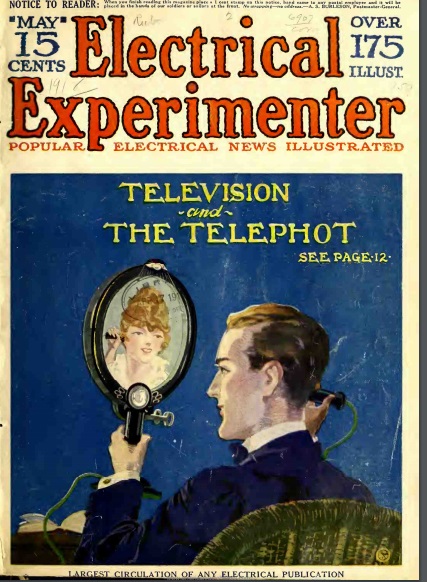 Shown here on the cover of Electrical Experimenter a hundred years ago this month, May 1918, is Hugo Gernsback‘s vision of Skype, or what he called “telephot, an apparatus attachable to our present telephone system so that when we speak to our distant friend, we may see his likeness not only as an immovable picture, but we will see his image exactly as we see our own image when looking into a mirror. In other words, the apparatus must faithfully follow every movement of our distant friend whether he is only five blocks away or one thousand miles. That such an invention is urgently required is needless to say. Everybody would wish to have such an instrument, and it is safe to say that such a device would revolutionize our present mode of living, just as much as the telephone revolutionized our former standard of living.”
Shown here on the cover of Electrical Experimenter a hundred years ago this month, May 1918, is Hugo Gernsback‘s vision of Skype, or what he called “telephot, an apparatus attachable to our present telephone system so that when we speak to our distant friend, we may see his likeness not only as an immovable picture, but we will see his image exactly as we see our own image when looking into a mirror. In other words, the apparatus must faithfully follow every movement of our distant friend whether he is only five blocks away or one thousand miles. That such an invention is urgently required is needless to say. Everybody would wish to have such an instrument, and it is safe to say that such a device would revolutionize our present mode of living, just as much as the telephone revolutionized our former standard of living.”
Gernsback reported that inventors were working on the problem, but the main catch was what we would today call the bandwidth, since it had to be “possible to attach it to the present-day telephone lines,” which to him was a single wire and a ground return wire. “In most of the schemes offered by inventors heretofore, a plurality of wires was necessary; in some cases several thousand pairs of wires. No matter how well such an instrument might work, this alone would doom it to certain failure.”
